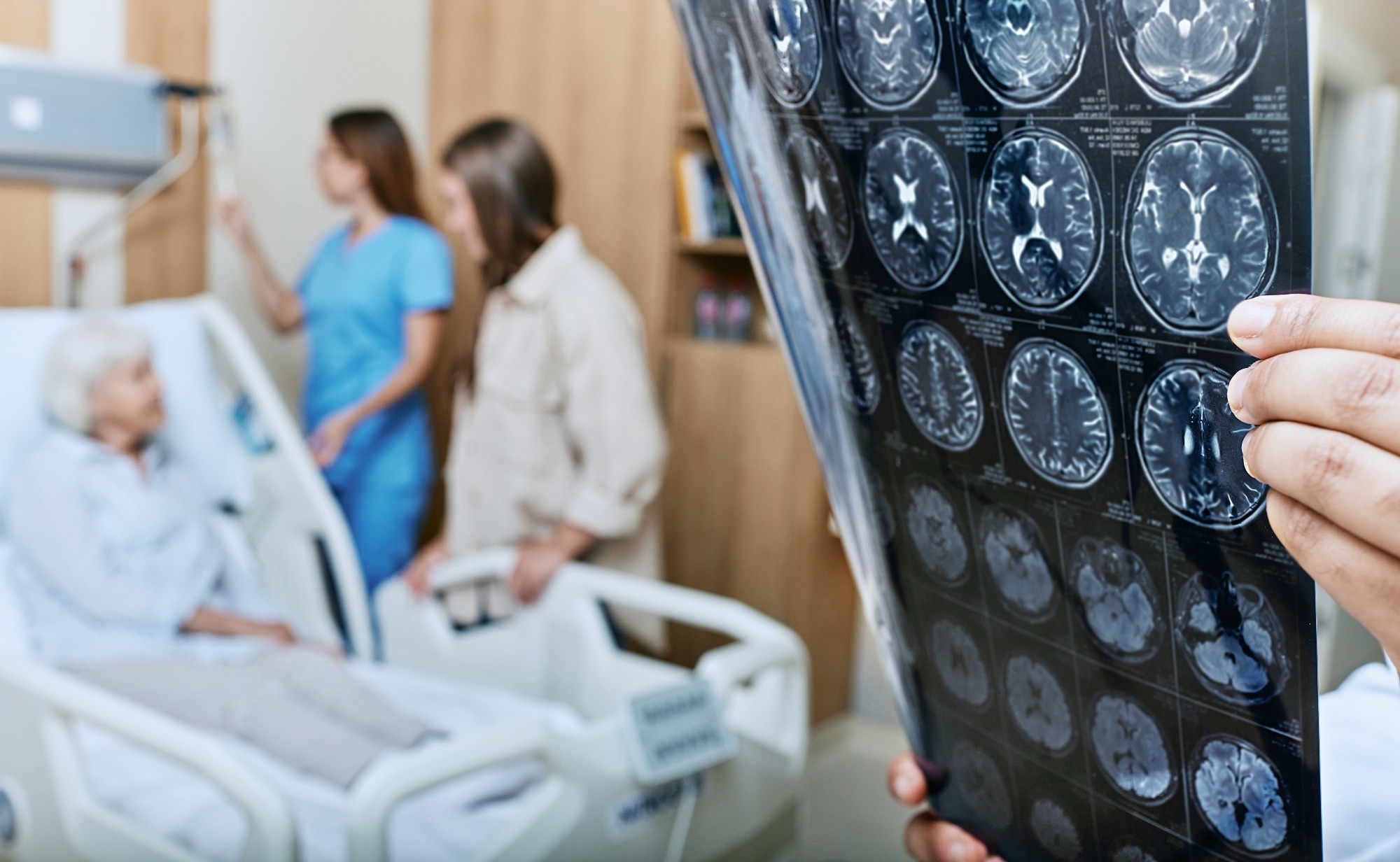You can estimate yours here: Dietary inflammatory index calculator
Unless you think your doctor knows how to do this.
Dietary inflammatory index calculator
Diet-related inflammation may raise stroke risk, US study finds
In a recent study published in BMC Public Health, a group of researchers investigated the relationship between the dietary inflammatory index (DII) and stroke incidence in the United States (US) population using National Health and Nutrition Examination Survey (NHANES) 1999–2018 data.
 Study: Association between dietary inflammatory index and Stroke in the US population: evidence from NHANES 1999–2018. Image Credit: Peakstock/Shutterstock.com
Study: Association between dietary inflammatory index and Stroke in the US population: evidence from NHANES 1999–2018. Image Credit: Peakstock/Shutterstock.com
Background
Stroke, a major health issue worldwide, is increasing in prevalence, particularly among younger adults due to modifiable risk factors like obesity and hypertension.
Systemic inflammation, often marked by elevated inflammatory biomarkers like interleukin-1β (IL-1β), and IL-6, is a key factor in stroke development. Dietary patterns significantly affect this inflammation; high-fat Western diets increase it, whereas Mediterranean diets are protective.
The DII evaluates a diet's inflammatory potential, with most studies suggesting a positive correlation between higher DII and stroke, although some results are inconsistent, underscoring the need for further research in this area.
About the study
The present study utilized data from the NHANES, a national campaign by the National Center for Health Statistics (NCHS) focusing on the health and nutritional status of US civilians. This study included cross-sectional data of 101,316 participants from ten consecutive NHANES cycles (1999–2018).
Participants were selected based on specific criteria: omitting people under 18 or over 80 years, women who are pregnant, and those lacking relevant dietary or stroke information. This process resulted in a final sample of 44,019 participants.
Dietary intake data were collected in the mobile examination center, reflecting food and drink consumption over the 24 hours preceding the interview.
The DII was calculated based on 26 of 45 food parameters, each with a specific score influenced by their effects on major inflammatory biomarkers. This scoring system identifies diets with pro-inflammatory, anti-inflammatory, or neutral potentials.
Stroke was determined based on self-reported diagnoses by a physician. Despite potential recall bias and lack of information on stroke type, ischemic stroke was presumed to be predominant due to its higher prevalence and closer association with chronic low-grade inflammation.
A comprehensive range of covariates known to influence stroke risk was collected. This included demographic features, physical examination results, and laboratory test outcomes. Race/ethnicity, educational level, smoking status, alcohol consumption, and body mass index (BMI) were among the demographic data collected.
Clinical measures like blood pressure, blood glucose, cholesterol levels, and kidney function were also recorded.
Statistical analysis accounted for NHANES' complex sampling design, using sample weights for accurate health statistics estimation. Differences in baseline characteristics between non-stroke and stroke participants were assessed using t-tests and chi-square tests.
DII scores were divided into quartiles for analysis. Multiple logistic regression models, both adjusted and non-adjusted, estimated the odds ratios and confidence intervals for the DII-stroke association.
The study further explored this relationship using restricted cubic spline regression and conducted subgroup analyses to identify significant interactions with various covariates.
Least Absolute Shrinkage and Selection Operator (LASSO) regression was employed to pinpoint critical dietary predictors of stroke, and a risk prediction nomogram model was developed.
This model's predictive power was validated by the receiver operating characteristic curve. All statistical analyses were conducted using R software, with a significance level set at a two-tailed P-value < 0.05.
Study results
The study comprised 44,019 participants with an average age of 45.83 years. Stroke prevalence among these participants was 3.38%, and the median DII score was 1.39.
Stroke patients were typically older, predominantly female, and more often non-Hispanic Black, with lower education levels compared to non-stroke individuals.
They were also more likely to be smokers, non-drinkers, and diabetic, and exhibited higher levels of systolic blood pressure (SBP), triglycerides, total cholesterol, and various blood cell counts. Stroke patients had a significantly higher DII score than their non-stroke counterparts (1.99 vs. 1.37).
In assessing dietary components, stroke patients generally had lower intake of most nutrients, except for vitamin E and caffeine. Further analyses grouped by DII quartiles revealed distinct cardiometabolic profiles among participants.
A key finding was the positive, nonlinear association between higher DII and increased stroke risk. This was consistent across various subgroups, regardless of gender, BMI, smoking status, age, race/ethnicity, alcohol consumption, diabetes, and hypertension.
For men, the stroke risk escalated sharply with a DII over 2, while in women, the correlation between DII and stroke was linear.
The study employed LASSO penalized regression to identify stroke-related dietary factors, including dietary fiber, cholesterol, carbohydrates, specific polyunsaturated fatty acids, iron, and alcohol.
A risk prediction model incorporating these dietary factors and demographic variables demonstrated predictive value for stroke, with an Area Under the Curve (AUC) of 79.8%.
The sensitivity analysis reinforced these findings, showing a consistent positive correlation between higher DII scores and increased stroke risk in both adjusted and non-adjusted models.
Participants in the higher DII quartiles were more prone to stroke, affirming the stability and reliability of the logistic regression analysis results.
This comprehensive approach highlights the potential of dietary modification in stroke prevention and management strategies.
-
Mao, Y., Weng, J., Xie, Q. et al. (2024) Association between dietary inflammatory index and Stroke in the US population: evidence from NHANES 1999–2018. BMC Public Health, doi: https://doi.org/10.1186/s12889-023-17556-w. https://bmcpublichealth.biomedcentral.com/articles/10.1186/s12889-023-17556-w


No comments:
Post a Comment